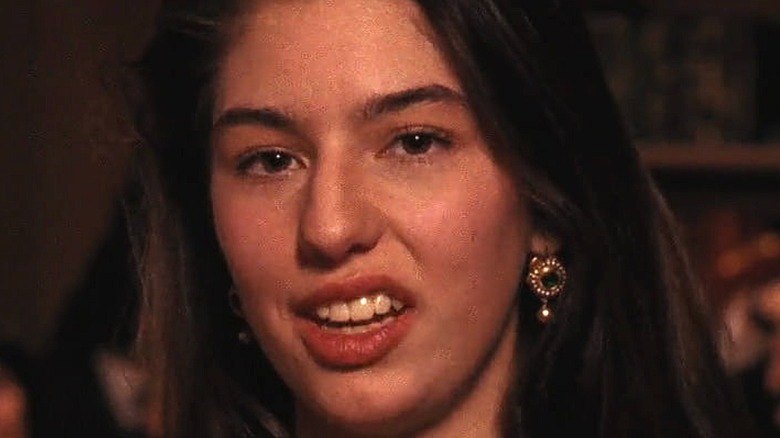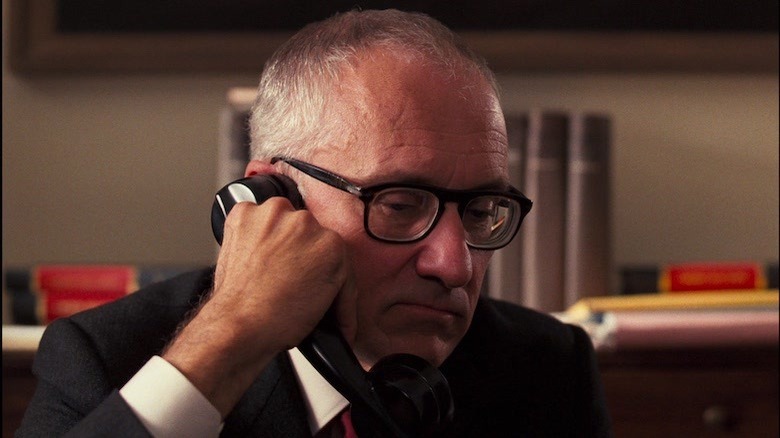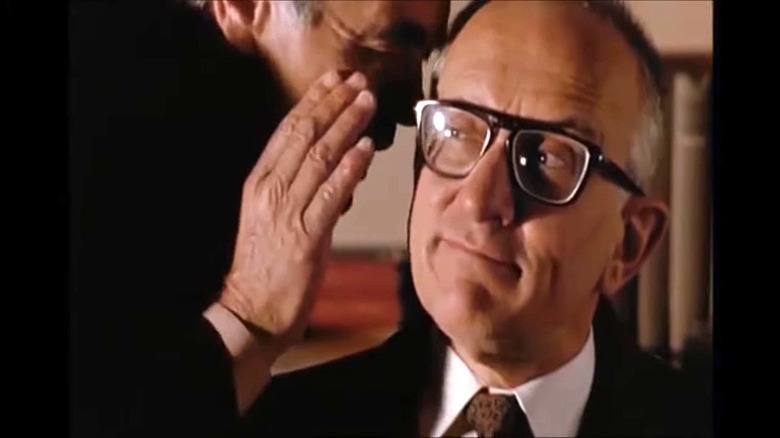What The Godfather Part III Had To Change To Remove Its NC-17 Rating
Released in 1972 and 1974, respectively, director Francis Ford Coppola's "The Godfather" and "The Godfather Part II" are known for many things, including the legendary performances of Marlon Brando, Al Pacino, James Caan, and Robert De Niro; as well as the films' two Best Picture Oscar wins at the Academy Awards. Among the two films' most riveting scenes are the executions carried out by the Corleone crime family, whether it be through Michael Corleone (Pacino) ordering hits on the heads of his rival crime families in the original film or the young Don Vito Corleone (De Niro) brutally exacting revenge on his father's murderer in the sequel.
Despite the legendary status of the first two "Godfather" chapters, film censors at the Motion Picture Association of America (MPAA) — the governing body that determines film ratings — were intent on making Coppola follow their stringent set of standards when he was preparing "The Godfather Part III" for release in 1990. And while the film contained violent mob hits like its two predecessors, there was one particular scene of excessive violence that earned the film an NC-17 rating, a new "adults only" delineation that replaced the movie industry's X rating in 1990 (via the Los Angeles Times). However, since the X rating had generally been viewed by the public as pornographic films, the rebranding to NC-17 — a rating that only allowed audiences 17 years old and above — still carried a stigma so strong that theater chains were reluctant to book any movie rated with it. Worse yet, then-dominant rental chains like Blockbuster Video refused to carry NC-17 titles (via Time).
As such, filmmakers like Coppola were forced to edit their films to attain a "Restricted" R rating, which allowed for audiences under 17 to attend if they were accompanied by a parent or adult guardian.
Coppola's edit of a brutal stabbing scene in The Godfather III got the film its R rating
Set 16 years after the events of its predecessor, "The Godfather Part III" finds the children of Michael and Kaye Corleone (Diane Keaton) — Anthony (Franc D'Ambrosio) and Mary (Sofia Coppola), fully grown — and Michael seeking redemption with an attempt to make the family business legitimate. There's also a shift in the Corleone family's power dynamic, as Michael voluntarily relinquishes his title of the family's Don to his nephew, Vincent Mancini (Andy Garcia). However, as new deadly threats arrive, Vincent — who has inherited his father Sonny's (James Caan) violent tendencies — carries on with the family's murderous ways under the guidance of Michael's sister, Connie Rizzi (Talia Shire).
As revealed in the 1990 documentary "The Godfather Family: A Look Inside," the particular scene that raised concerns with the MPAA came in the third act of "The Godfather Part III," with the execution of the Corleone's rival, Don Licio Lucchesi (Enzo Robutti). In the film's trailer, Lucchesi is put to death by having his neck snapped, but in the final version of the film, Coppola opted for a more dramatic demise.
As a result, when Michael's bodyguard, Calo (Franco Citti) leans in to whisper in Lucchesi's ear, instead of snapping his neck he removes the Don's glasses and stabs him in the neck with the horn-rimmed frame. To earn an R rating, Coppola trimmed back the extremely graphic original scene, which abruptly ends with the rim penetrating the mafioso's neck. A short edit later, the scene shows the bloody aftermath of the Lucchesi hit.
The director eventually restored the scene to its full, gory glory
Coppola, like his longtime film associate, George Lucas, has earned the reputation of pursuing the best possible version of his films, so he goes back to tinker with them for special edition releases (among his other works, Coppola has released alternate versions of "Apocalypse Now" and "The Cotton Club"). Coppola wasn't completely content with "The Godfather III," either, so in 2020, he released "The Godfather: Coda — The Death of Michael Corleone." According to Variety, the release not only celebrated the film's 30th anniversary but was meant to achieve the original vision he had for the film, along with his co-screenwriter and "The Godfather" book author Mario Puzo.
Oddly, Coppola didn't add — but actually trimmed — five minutes from "The Godfather Part III," as noted by the Chicago Tribune. To assemble the new version of the film, the director switched around the order of some scenes and re-edited some others, including the film's final shot to give the conclusion a different meaning. Naturally, part of Coppola's original vision was the graphic execution of Lucchesi — where blood is shown spraying from his neck — as the scene is presented in its full, gory glory.


